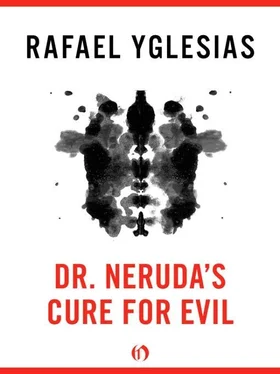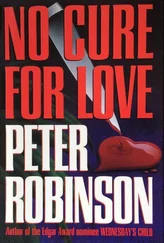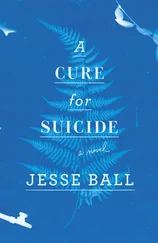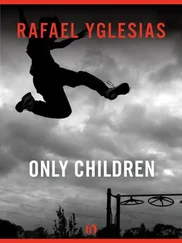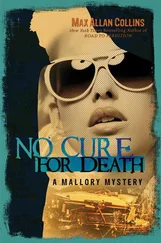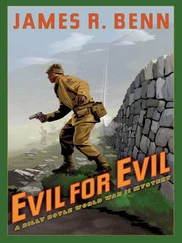O‘Boyle asked if I could explain the last two lines. I had trouble talking at first. I cleared my throat several times before I could manage to say, “I guess he must have read Freud at some point. It’s a paraphrase of something Freud wrote about the goal of therapy.”
“Oh yeah?” Considering the subject of our conversation, the detective seemed remarkably at ease with me. “What’s that? What did Freud write?”
“‘The goal of therapy is to replace the neurotic’s unrealistic misery with the normal misery of life.’”
“No kidding,” the detective commented. He read aloud the last few sentences of Gene’s note one more time. “‘You cured me,’” he quoted Gene in a mumble. “‘I’m not a neurotic anymore. It’s just that I can’t bear the normal misery of life.’” O‘Boyle raised his voice. “I still don’t get it. Can you explain it to me, Doc?”
I didn’t try.
I WENT TO NEW YORK THE NEXT DAY. THE FIRST PERSON I SAW AFTER Gene’s death was Susan Bracken, but an account of that meeting, as well as her surprising judgment of my work with Gene, belongs to the next section. I found out there would be no public funeral, no public memorial, no event that would mark Gene’s passing. That was understandable. He had murdered his ex-wife and committed suicide. One could hardly expect a big family funeral. Gene seemed, from our therapy, to have no close friends; other than the Copleys, the intimacies he formed at work didn’t penetrate his personal life. Halley and Stick wouldn’t and didn’t feel obliged. That left Don Kenny.
Detective O‘Boyle told me Gene’s father had arranged for the body to be picked up that afternoon to be cremated the next day. Perhaps Don planned to have someone say a few words; perhaps his friends would accompany him in his hour of grief and that would be Gene’s memorial. I still don’t know. I checked on Pete’s whereabouts right away. Sure enough, Cathy’s mother had come and would take him to Arizona.
After talking with Susan at her clinic in Greenwich Village, I walked down to the Bullshot gallery. I knew from my conversations with Gene that they represented Don’s photography exclusively. The gallery is typical of SoHo, on the ground floor of a cast iron building. The ceilings are high, the walls are white, the space wide and deep, its openness interrupted only by the supporting columns, which are sometimes painted white to fade away into the background or a bold color to make them stand out. Here they were done in black, which seemed to accomplish neither. A half wall divided Bullshot into two rooms. The front was devoted to a new photographer whose work seemed to be blowups of microscopic things, although I didn’t stop to find out.
In back there was a retrospective of Don’s work. The Garage Years,” they called it. Thanks to Gene, I understood the reference. This was the first time I had seen the pictures that figured in my early sessions with Gene. They were straightforward portraits of people, traditional to my eyes. That surprised me. It’s true they were not formal poses, the setting was always outside, and there was invariably an object at the center which provided drama or at least a comment on the person. The truth is, I didn’t linger to appreciate them. I spotted what I hoped to find right away and moved to it.
The photograph was large, perhaps two by four feet. Black and white, of course, processed into a sheen that reminded me of old Hollywood movies. At its center is the white stone head of a lion. I’ve never bothered to check, but I assume it’s one of the lions outside the Forty-second Street Library. A young, not beautiful, but apparently contented Carol Kenny leans against the side of the lion’s head. Standing on the statue’s base and partially in her arms is Gene, no more than five or six years old. Carol has a grip on his little wrist, feeding his clenched hand into the open jaws of the roaring lion, positioning it between the sharp canines. This dominates the center of the photo, and naturally your eyes drift to the boy’s face to see his reaction.
He’s not looking at his threatened hand, but at his young mother’s face. His hair is wild and thick. His big eyes shine and his skin is smooth. All that is to be expected. But his expression is remarkable. And that’s the surprise. There’s no mock fear, and certainly no real fear. His mouth is wide open, showing the different-sized teeth of a growing child. And he’s laughing. He’s laughing with all his heart. He is full of trust and joy.
I decided then, that at least for me, the passing of this soul would not go unnoticed.
PART THREE
Evil:
Diagnosis and Cure
“HOW MANY PATIENTS HAVE YOU KILLED?” I ASKED SUSAN. WE WERE walking through the Farmers’ Market in Union Square, carrying takeout cappuccinos we bought at Dean & Deluca’s on University Place. Flanking us were stalls of fresh fruit, vegetables, and home-baked pies, tended by men and women who didn’t look like farmers. The goods are grown and baked upstate and sold three times a week in this open-air market, handwritten signs proclaiming their organic and healthful origins. New Yorkers are eager buyers. Susan and I were obliged to progress in baby steps because of the tightly packed crowd.
“Stop that,” she said, whacking me on the shoulder. She diverted to the right to examine a row of apple bins. She backed off quickly, mumbling, “No, not Harry’s favorite.” She was fifty-three years old. Because she allowed her hair to be completely gray, demurely pulled back into a bun, she appeared older. Otherwise, she was hardly changed: tall, hunched over, all bones and limbs. Her flat forehead had a few more lines, but her muddy eyes remained friendly and always curious. Harry and Susan still lived in their loft on Sixteenth Street. Her clinics continued to operate in the Village and Brooklyn. “Let’s go into the park,” she said.
“Yes, ma‘am.”
We crossed between the stalls to reach Union Square Park. It was lunchtime and there too were mobs of people: students and office workers eating sandwiches off paper bags spread on their laps, aiming hot dogs at their mouths, or catching the tips of pizzas between their front teeth. One couple necked passionately, their feet ringed by pigeons searching for crumbs. “You didn’t kill anybody,” she said. She perched on an empty stretch of wall dividing the park from the market. She opened her container of cappuccino and licked the foam on the underside of the lid. Her long legs kicked slowly back and forth, a grungy pair of New Balance sneakers brushing the pavement.
I stayed on my feet facing her and raised a lumpy manila envelope in my right hand. “I have tapes of all my sessions with Gene.”
“You do?”
“I mean, for the adult period. Not from your clinic.”
“You taped every word?” I nodded. Susan sighed. “Yet another reason to hate technology. So now you’re going to torture yourself listening to them?”
“Actually I was hoping to torture you.”
“Forget it.”
“You know, Susan, in your old age you’re developing a Yiddish accent.”
“A little hostile today, are we? Well, you’re right. Half the time I feel like I’m running a very cranky temple.” She sipped her cappuccino and laughed. “Did you ever read Freud’s letter to … I forget who. Anyway, he was very excited that Jung had become a disciple. You know, this was long before the Great Betrayal. He was so excited because Jung was a nice Christian boy. We need Christian practitioners, he wrote. Sigie was worried everybody would think psychoanalysis was just a Jewish thing.
“Maybe that’s what killed Gene. I fed him chicken soup when what he needed was a martini.”
Читать дальше
